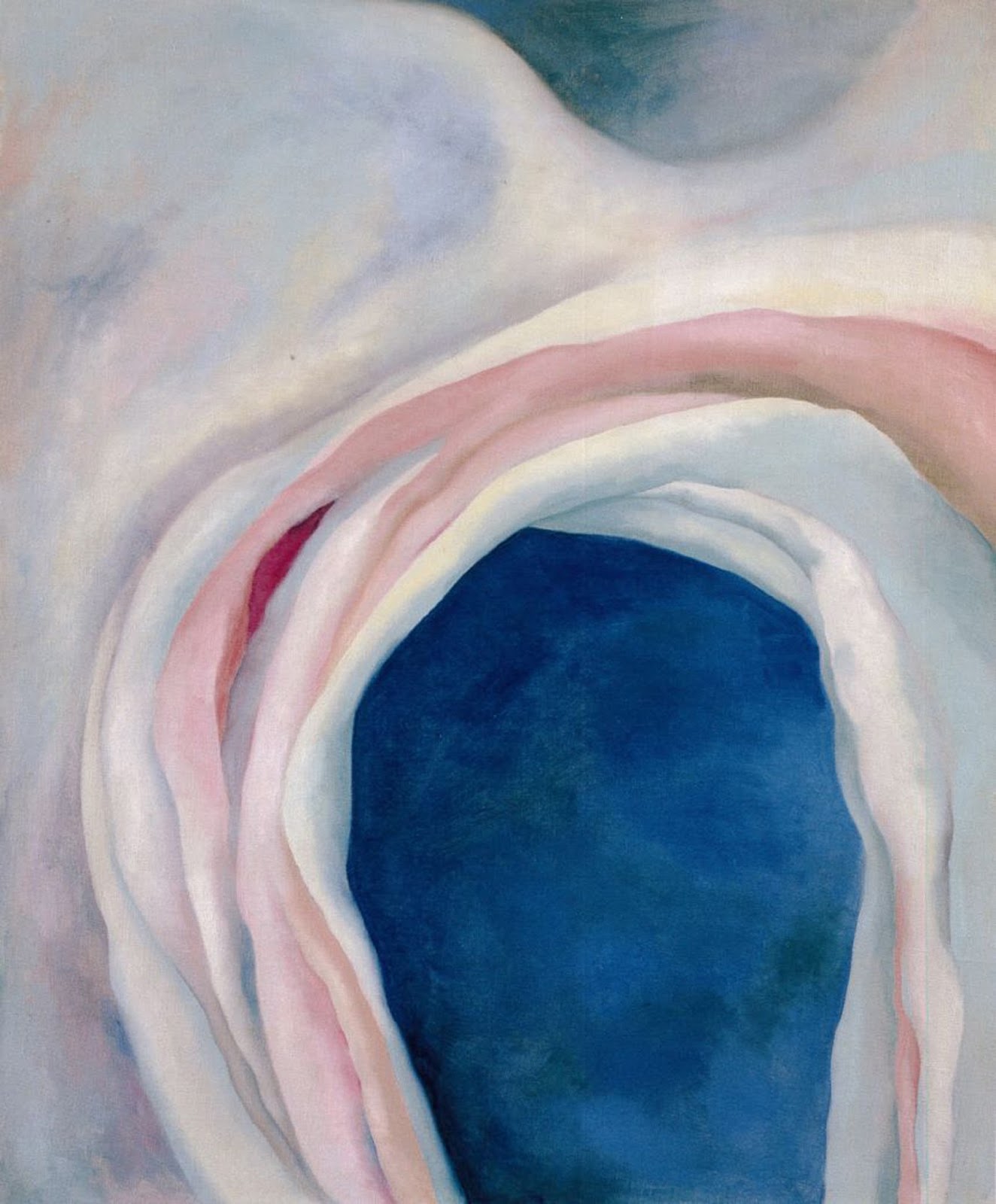19/08/16
Georgia
O’Keeffe
Tate Modern
6 July – 30 October 2016
When one thinks of Georgia O’Keeffe
(1887-1986), one inevitably pictures her enormous flower paintings, cropped
close and magnified large, so that, as one might well think next, if familiar
with the legend, that they look like female genitalia. Judy Chicago and Miriam
Schapiro certainly perpetuated the idea of a “female iconography”, writing
about O’Keeffe’s work in the 70s, but, already at the time, the photographer
Alfred Stieglitz (1864-1946), also O’Keeffe’s husband, was propounding this
interpretation, hinting at erotic content and offering psychoanalytic readings
of her paintings. It is unavoidable, then, in writing about O’Keeffe, that the
topic of female sexuality should be touched on, but it ought not to be dwelled
on, since, take it or leave it as one possible interpretation of her work, it
is but that. Certainly many of her paintings do evoke sexual imagery, but as
Roxana Robinson points out in her biography of O’Keeffe: “The vulval imagery in
O’Keeffe’s flowers […] is something for which botany should take the
responsibility. Flowers do bear structural similarities to human reproductive
organs, and this has more to do with the process of reproduction, both
horticultural and human, than with the suppressed or expressed sexuality of an
artist who paints the image of a flower.”1 O’Keeffe herself also
always remained adamant: “When people read erotic symbols into my paintings,
they’re really talking about their own affairs.” So, not only is this legend a
myth, but there is so much more to her life’s work than just these particular
paintings.

Read this review here
1. Georgia
O’Keeffe: A Life by Roxana Robinson, published by Bloomsbury, 1990, page 282
Image:
Music – Pink and Blue No. 1, 1918
Oil paint on canvas, 88.9 x 73.7 cm
Collection of Barney A. Ebsworth
Partial and Promised gift to Seattle Art Museum
© 2016 Georgia O’Keeffe Museum/DACS, London